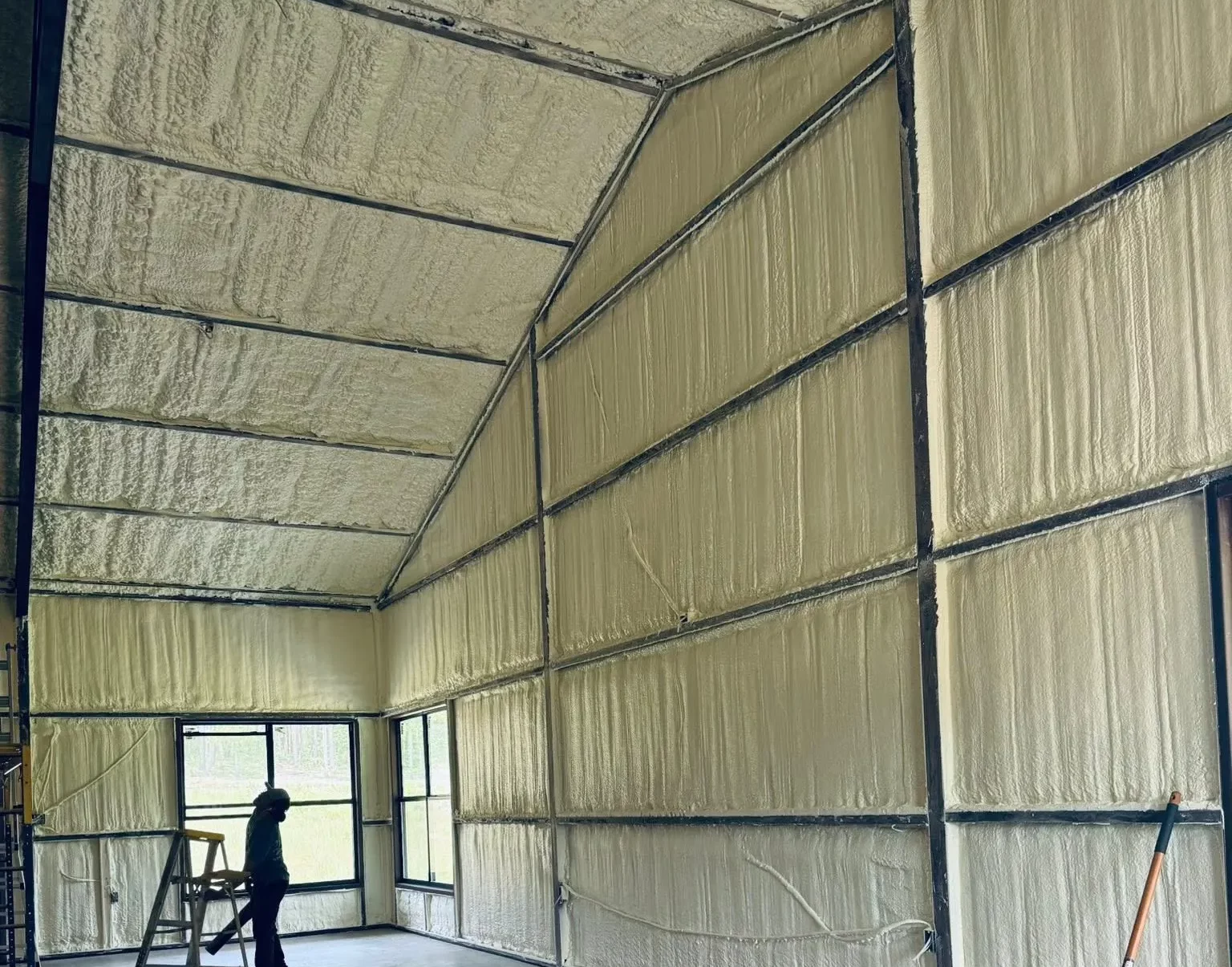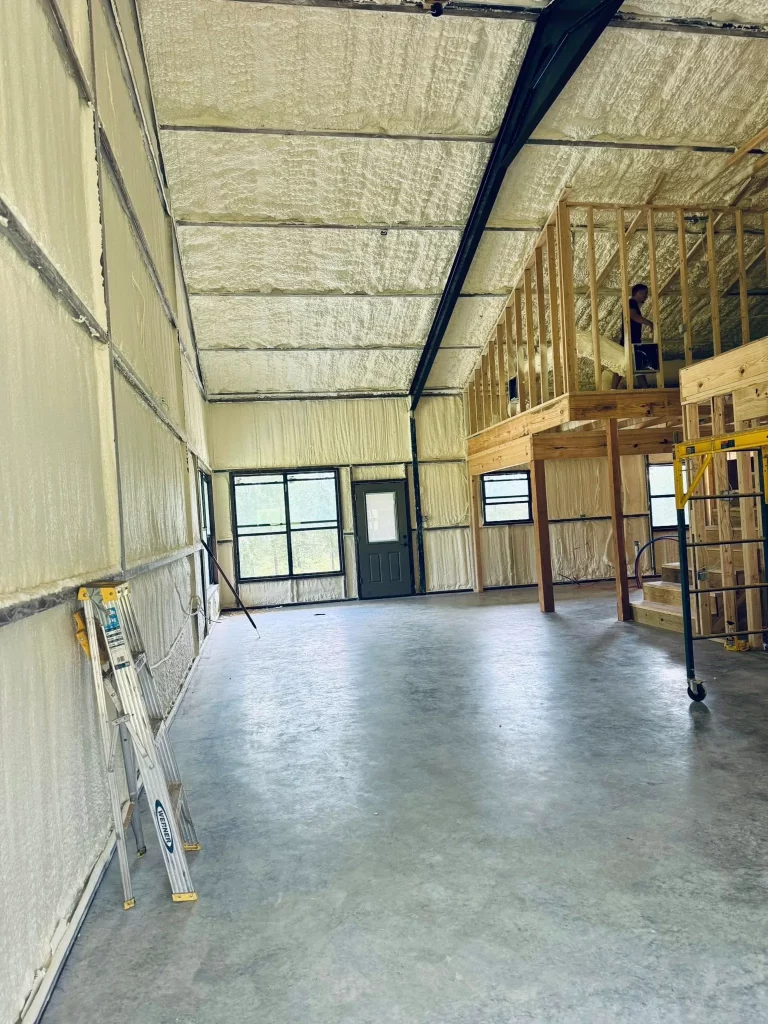
Spray foam insulation can reduce utility bills in Little Rock, AR by 15-50% annually through superior air sealing and thermal performance. The humid subtropical climate creates significant cooling demands from May through September, making effective insulation crucial for energy efficiency. Properly installed spray foam creates an airtight barrier that prevents conditioned air loss and reduces HVAC system workload.
Arkansas homeowners typically see the most dramatic savings during peak summer months when air conditioning costs soar. The investment pays for itself through consistent monthly reductions in electricity bills, with most installations achieving positive cash flow within 2-5 years. LMC Insulation, LLC has observed measurable energy improvements across hundreds of Little Rock area installations, establishing proven performance data specific to regional climate conditions.
Little Rock’s climate presents unique challenges for home energy efficiency. Summer temperatures frequently exceed 90°F with humidity levels above 70%, creating substantial cooling loads. Traditional insulation materials often fail to address air infiltration, allowing conditioned air to escape and humid outdoor air to enter.
Spray foam insulation addresses both thermal resistance and air sealing simultaneously. Closed-cell foam expands to fill gaps, cracks, and voids that conventional materials cannot reach. This comprehensive approach eliminates thermal bridging and reduces the workload on HVAC systems.
The Arkansas Public Service Commission reports that residential customers consume an average of 1,200 kWh monthly during summer months. Effective insulation upgrades can reduce this consumption by 200-600 kWh monthly, translating to substantial dollar savings.
| Insulation Type | R-Value per Inch | Air Sealing | Moisture Control | Typical Energy Savings |
|---|---|---|---|---|
| Closed-Cell Spray Foam | 6.0-7.0 | Excellent | Superior | 25-50% |
| Open-Cell Spray Foam | 3.5-4.0 | Very Good | Good | 15-35% |
| Fiberglass Batts | 3.1-3.4 | Poor | None | 5-15% |
| Blown-in Cellulose | 3.2-3.8 | Fair | Limited | 10-20% |
Bonus Tip: Focus on attic and crawl space applications first. These areas typically account for 40-60% of total energy loss in Arkansas homes due to stack effect and temperature differentials.
Little Rock’s location in the Arkansas River Valley creates specific conditions that impact insulation performance. The area experiences temperature swings of 50-60°F between winter lows and summer highs. This variation stresses building envelopes and highlights insulation deficiencies.
Humidity control becomes critical during spring and fall transition periods. Spray foam’s vapor barrier properties prevent moisture infiltration that can reduce insulation effectiveness and promote mold growth. This dual benefit provides year-round energy savings beyond simple thermal resistance.
Local utility rates average $0.11-0.13 per kWh, making energy conservation financially attractive. The combination of high usage during peak months and rising utility costs creates significant potential for bill reduction through insulation upgrades.
| Application Area | Recommended Type | Target R-Value | Expected Savings |
|---|---|---|---|
| Attic Floor | Closed-Cell | R-30 to R-38 | 30-45% cooling costs |
| Crawl Space Walls | Closed-Cell | R-15 to R-20 | 15-25% total energy |
| Rim Joists | Closed-Cell | R-15 minimum | 10-15% heating costs |
| Cathedral Ceilings | Closed-Cell | R-30 minimum | 25-35% HVAC load |
Existing insulation condition significantly impacts potential savings. Homes with minimal or damaged insulation see greater improvements than those with adequate conventional materials. A professional energy assessment identifies priority areas and quantifies expected returns.
Building age affects installation complexity and outcomes. Older homes often have more air leakage points, creating opportunities for dramatic improvements. However, electrical and plumbing modifications may be necessary before foam application.
Bonus Tip: Schedule installation during moderate weather periods (March-April or October-November) to immediately experience comfort improvements and begin measuring energy savings.
HVAC system sizing becomes important after comprehensive air sealing. Reduced building loads may allow downsizing equipment during future replacements, providing additional long-term savings opportunities.

Quality installation determines long-term performance and energy savings potential. LMC Insulation, LLC provides comprehensive insulation solutions designed for Arkansas climate conditions.
Closed-Cell Spray Foam Installation creates maximum thermal resistance and complete air barrier. This premium option delivers the highest energy savings for Little Rock homeowners seeking dramatic utility bill reductions.
Open-Cell Spray Foam Application offers excellent air sealing with good thermal performance at moderate investment levels. This approach works well for budget-conscious projects targeting specific problem areas.
Air Sealing Services complement any insulation upgrade by addressing remaining infiltration points. Combined approaches maximize energy efficiency improvements and accelerate payback periods.
Insulation Removal and Replacement addresses contaminated or ineffective existing materials. Clean installations ensure optimal performance and prevent future moisture or pest issues.
Most homeowners notice reduced energy consumption within the first complete billing cycle. Seasonal variations affect monthly amounts, but annual comparisons show consistent reductions.
Attic applications typically offer the highest savings potential, followed by crawl spaces and basement areas. These locations address the most significant thermal losses in Arkansas homes.
While foam reduces system loads, existing equipment efficiency and condition determine replacement needs. Many homeowners delay system upgrades due to reduced demands after insulation improvements.
Energy savings calculations based on local utility rates and consumption patterns typically support positive returns within 3-7 years. Rising energy costs improve these projections over time.
Spray foam insulation offers proven utility bill reduction potential for Little Rock homeowners facing rising energy costs. The combination of superior thermal performance and complete air sealing addresses the primary causes of energy waste in Arkansas climate conditions.
Professional assessment and quality installation determine actual savings outcomes. Focus on comprehensive approaches that address major thermal losses while considering long-term building performance and comfort improvements.
Reducing utility bills through spray foam insulation requires proper planning and expert installation. Professional evaluation identifies the most cost-effective improvements for your specific home and energy usage patterns.
LMC Insulation, LLC provides comprehensive energy efficiency solutions tailored to Little Rock’s climate challenges. Contact [email protected] or call (479) 351-6175 to schedule a detailed assessment and receive customized recommendations for maximizing your utility bill savings through strategic insulation upgrades.
Spray foam installations typically reduce energy bills by 15-50% annually, with average savings of $300-800 per year for typical Little Rock homes. Actual amounts depend on home size, existing insulation levels, and HVAC efficiency.
Spray foam outperforms traditional materials in humid climates by providing both thermal resistance and moisture control. The air sealing properties prevent humid outdoor air infiltration that reduces conventional insulation effectiveness.
Home age, existing insulation condition, HVAC system efficiency, and installation quality determine savings potential. Older homes with poor existing insulation typically see the greatest improvements from spray foam upgrades.
Most Little Rock installations achieve positive cash flow within 2-5 years through monthly utility bill reductions. Rising energy costs and improved comfort benefits accelerate payback periods for quality installations.
Spray foam provides year-round energy savings by addressing thermal loss during winter heating and infiltration during summer cooling periods. The comprehensive air sealing benefits both seasonal energy demands equally.